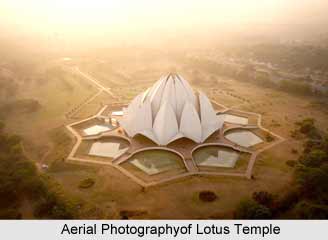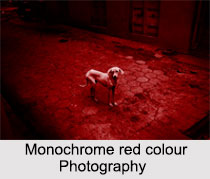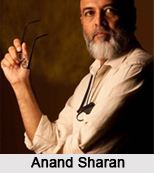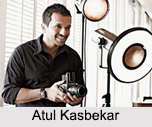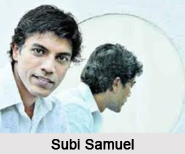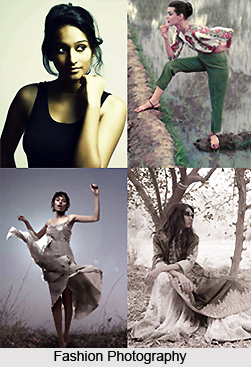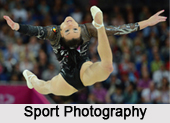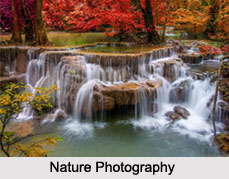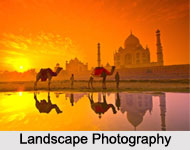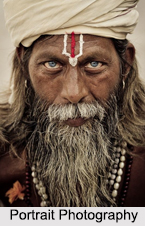 Portrait photography is a type of photography that centres on capturing a person"s resemblance, mainly their face. Normally, people"s faces are the most important part in these types of photographs. Other elements, such as bodies, clothing, props and backgrounds may be noticeable, but the photographer typically doesn"t try to illustrate notice to them.
Portrait photography is a type of photography that centres on capturing a person"s resemblance, mainly their face. Normally, people"s faces are the most important part in these types of photographs. Other elements, such as bodies, clothing, props and backgrounds may be noticeable, but the photographer typically doesn"t try to illustrate notice to them.
Portrait photography is to capture a person`s face, ideally or the likeness of a group of people in a flattering manner. Although the entire body of a person is shot, the main focus remains the face of the person being photographed. Many people enjoy having professionally made family portraits to hang in their homes, or special portraits to commemorate certain events, such as graduations or weddings. Photographers in studios practice portraiture. Photographic studios prefer their subjects; say men, women children or pets to be brought to the studio for portraits so that they may get the benefit of proper lighting and background. However, there is an increasing demand for portraits in home, garden or workplace, especially in the case of children`s portraits. Photographers working on portraits have to attempt to capture the most natural expression. A portrait photograph should embody some element that reveals the true character of the individual. Portrait photographers need the ability to help people relax in front of the camera.
Origin of Portrait Photography
The camera reached India in about 1855. Robert Tytler, an Englishman who was in vigorous military service in India since 1835, owned a camera. A naturalist, Tytler along with his wife Harriet was perhaps first people to capture Indian landscapes in a photograph and document it. Portrait studios were being advertised by 1849 and their business rapidly grew. They continued to make daguerreotypes for some years because the comparative simplicity and speed of the process allowed them to create small pictures in a few minutes at logical prices, but for other uses the new process rapidly dominated. A set of this extremely valuable work that had been presented to the patron of the Bombay Photographic Society was recently discovered in the DeGolyer Library of Southern Methodist University in Texas, USA.
After the uprising, though there were many photographers who came to India and travelled along its length and breadth capturing the rural area. In 1862, British photographer Charles Shepherd opened the first photographic studio in India in Shimla. He partnered with Samuel Bourne and opened a second studio in Kolkata in 1864, which is still operational. `Bourne and Shepherd` in Kolkata is world`s oldest photographic studio which is still in process.
Duties of a Portrait Photographer
The subjects of portrait photography are naturally not proficient models. Instead, they are generally the usual normal people. Many at times, portrait photography is used to remember an occasion, such as a wedding or even just another school year.
The first thing which a portrait photographer will do is to meet with the client. In this meeting the photographer and the client generally talk about how the portrait or portraits should look. If the client needs certain look or feel to the photograph, he should discuss this with the photographer. As posing the subjects, a portrait photographer will generally require paying attention to numerous small details, such as the way a head is tilted or which way hands are facing etc. Following the subjects have been posed, a portrait photographer will then take a number of pictures. Each of these pictures will sometimes have different backgrounds or lighting effects.
Skills for a Portrait Photographer
Photography abilities are necessary in order to follow any type of photography career as well as portrait photography. Aspiring portrait photographers should be comfortable with and have knowledge with shooting high quality photographs with a selection of different photography kit. This can contain such things as traditional and digital cameras, as well as lighting gear. A portrait photographer also requires immense attention to feature. This is particularly significant when posing subjects. Portrait photographer should be superior with people and have brilliant communication skills. They should be open and they should also be capable to produce the types of shots that their clients are looking for.
Career in Portrait Photography
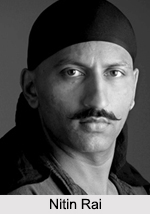 A creative eye with visual thoughts is the basic attribute required in a photographer. There are some diploma and certificate courses which can pursue to include technical specialisation. A portrait photographer can follow these courses along with the college. To get commenced, it`s a good initiative to get on-the-job guidance by working with a well-known photographer. This will help out a newcomer to gain business expertise, client handling skills and a good idea of the problems a photographer faces in the ground. Photography workshops are also a great hands-on knowledge as well. After the completion of the course, a photographer can get the job opportunity in various media sectors like - Add media, News media, Documentary firms, Magazines, Event management organizations, Theatre, Movies etc.
A creative eye with visual thoughts is the basic attribute required in a photographer. There are some diploma and certificate courses which can pursue to include technical specialisation. A portrait photographer can follow these courses along with the college. To get commenced, it`s a good initiative to get on-the-job guidance by working with a well-known photographer. This will help out a newcomer to gain business expertise, client handling skills and a good idea of the problems a photographer faces in the ground. Photography workshops are also a great hands-on knowledge as well. After the completion of the course, a photographer can get the job opportunity in various media sectors like - Add media, News media, Documentary firms, Magazines, Event management organizations, Theatre, Movies etc.
Popular Portrait Photographers
Portrait photography has been around since the invention and popularization of the camera. Earlier kings and queens used to have artists to paint their portraits but with the invention of the camera the long work was reduced to a few minutes and one had the portrait of their full family. It is also a cheaper method that portrait painting. Earlier the subjects were generally seated against plain backgrounds and lit with the soft light of an overhead window and whatever else could be reflected with mirrors. Some of the Popular Portrait Photographers in India are as follows:
•Dinesh Khanna: Dinesh Khanna is a photographer and co-founder of the Delhi Photo Festival. He has worked variously in Advertising, before in the end turning to photography in 1990. He also runs the non-profit organization Nazar Foundation with Prashant Panjiar with the aim of mentoring young photographers and promoting the art of photography.
•Siddhartha Joshi: He has ample of candid snapshots which create it all more pleasing. He focuses on kids and generally, exclusively on the face with extremely well defined features drawing the viewer"s attention to every detail and allowing one to knit a tale. He creatively captures many diverse moods.
•Hashim Badani: He develops generally including pictures from in and around Mumbai. He has a flawless eye to turn the usual moments into an amazing picture. He confines well, composes well and plays wonderfully with textures and the captions add a whole new dimension to his pictures. He is a contributing photographer to Top Gear, Lonely Planet Magazine and Rolling Stone and his pictures often get reposted by various pages.
•Nitin Rai: His work has been featured prominently in International Magazines like the Time Magazine, Der Speigel, Stern, Figaro, Facts, Tattler, the Sunday telegraph and the Independent. He has worked for the corporate like Aditya Birla Group, Dlf, MGF, Ansal API, Bhartia Industries etc.
•Homai Vyarawalla: Homai Vyarawalla, commonly known by her pseudonym "Dalda 13", was India`s first woman photographer. First active in the late 1930s, she retired in the early 1970s. In 2011, she was awarded Padma Vibhushan, the second highest civilian award of India.
•Benu Sen: Benu Sen was an Indian photographer from Kolkata. He was the Secretary General of the Federation of Indian Photography (FIP), the Indian chapter of the Federation Internationale de l`Art Photographique (FIAP) and President of the Photographic Association of Dum Dum (PAD). He was awarded with Life-Time Achievement award, Master of Photography, Fellowship of the Royal Photographic Society of Great Britain (FRPS) etc.
•Raghu Rai: Raghu Rai is an Indian photographer and photojournalist. He was a protege of Henri Cartier-Bresson, who appointed Rai, then a young photojournalist to Magnum Photos in 1977. He has been awarded with Padmashri and Photographer of the Year from USA.
•Sooni Taraporevala: Sooni Taraporevala is an Indian screenwriter and photographer, who is best known as the screenwriter of Mississippi Masala, The Namesake and Oscar-nominated Salaam Bombay, all directed by Mira Nair. She directed her first feature film, based on a screenplay of her own entitled "Little Zizou." This film explores issues facing the Parsi community to which she belongs. She was awarded the Padma Shri by Government of India in 2014.
Contemporary portrait photographers strive not only to capture a person`s likeness, but also the person`s mood and thoughts in an instant in time. With the development of photographic techniques, photographers took their cameras to war fields, across oceans and also in wilderness to capture the various essence of portraiture.
Lighting plays a vital role in portrait photography as the subject has to be lit properly to bring out that particular kind of emotion. The photographer has complete control over the lighting of their subject and can adjust direction, temperature, quality, and contrast to meet any requirements. The basic lights used are key light, fill lights, kicker lights and background lights. The photographer has to be careful about shadows and has to work accordingly.
Photography Institutes in India
Photography is a wonderful medium of self-expression. With the blast of the communication network, Photography has now become a profession with huge business value. There are so many certificate and diploma courses in photography in India. Beside these, very few colleges offer the bachelor degree in fine arts and photography. Some of the institutes of Photography are as follows:
•Asian Academy of film and television.
•National Institute of Photography Mumbai: They offer all kind of courses from crash course to advance course.
•Centre for Research in Art of Film & Television (CRAFT), Delhi.
•New York Film Academy, Greater Noida.
•The Indian Institute of Digital Art and Animation, Kolkata.
•International school of photography.
•Film and Television Institute of India.
•Fergussen College.
•MCRC, Jamia Millia Islamia.
•National Institute of Design.
•Satyajit Ray Film and Television Institute.
•St. Xavier"s Institute of Communication.
•The Film and TV Institute of Tamil Nadu.





